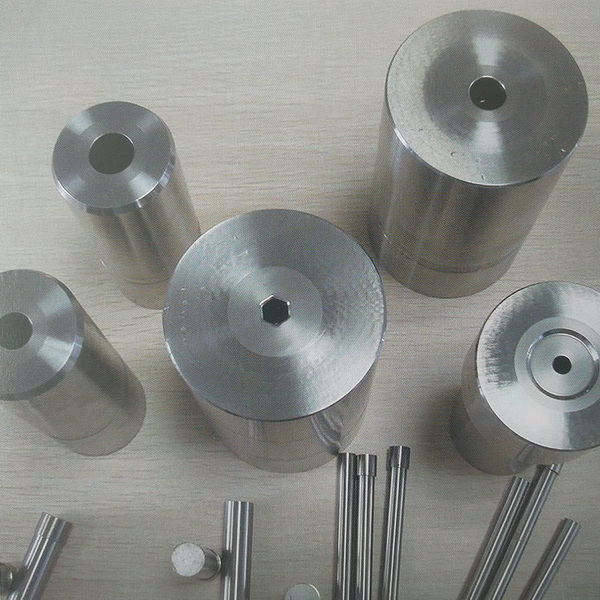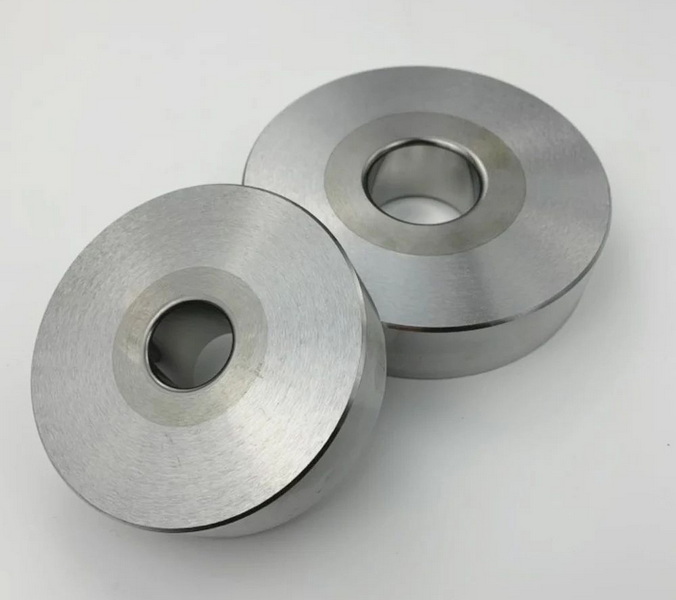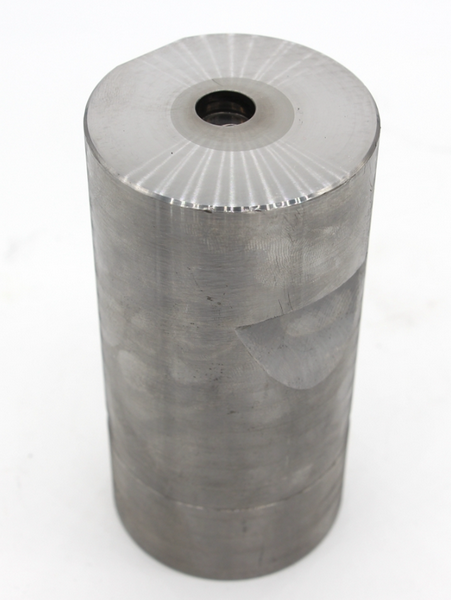Content Menu
● Introduction
● Understanding Carbide Dies
>> Definition and Composition of Carbide Dies
>> Comparison with Traditional Steel Dies
>> Advantages of Using Carbide Dies
● The Concept of No Lube Reloading
>> Explanation of Why Carbide Dies Do Not Require Lubrication
>> Discussion on the Mechanics of Sizing Without Lube
>> Benefits of Lubeless Reloading
● Applications of Carbide Dies
>> Types of Ammunition Suitable for Carbide Dies
>> Examples of Popular Calibers
>> Case Studies or Testimonials from Experienced Reloaders
● Best Practices for Using Carbide Dies
>> Tips for Maintaining Carbide Dies for Longevity
>> Importance of Cleanliness in Cases to Avoid Damage
>> Common Mistakes to Avoid When Using Carbide Dies
● Conclusion
● Frequently Asked Questions
>> Q1. What are carbide dies, and how do they differ from steel dies?
>> Q2. Can I use carbide dies for all types of ammunition?
>> Q3. How do I maintain my carbide dies?
>> Q4. What are the benefits of lubeless reloading?
>> Q5. Are carbide dies worth the investment?
Introduction
Reloading ammunition is a crucial aspect of shooting sports, allowing enthusiasts to customize their loads for performance, accuracy, and cost-effectiveness. Among the various tools used in this process, carbide dies have gained popularity for their efficiency and durability. This article explores the benefits of using carbide dies, particularly in the context of reloading without lubrication, a method that can save time and enhance the reloading experience.

Understanding Carbide Dies
Carbide dies are specialized tools made from tungsten carbide, a material known for its hardness and resistance to wear. Unlike traditional steel dies, carbide dies offer several advantages that make them a preferred choice for many reloaders.
Definition and Composition of Carbide Dies
Carbide dies are designed to resize and shape cartridge cases during the reloading process. The composition of tungsten carbide gives these dies exceptional strength, allowing them to withstand the high pressures and forces involved in reloading. This durability means that carbide dies can last significantly longer than their steel counterparts, making them a cost-effective investment for serious reloaders.
Comparison with Traditional Steel Dies
While steel dies are effective, they often require lubrication to prevent cases from sticking during resizing. This lubrication can add extra steps to the reloading process, including cleaning the cases afterward to remove any residue. In contrast, carbide dies eliminate the need for lubrication, streamlining the reloading process and reducing the time spent on maintenance.
Advantages of Using Carbide Dies
The primary advantages of carbide dies include:
- Longevity: Carbide dies can last for thousands of rounds without showing signs of wear.
- Efficiency: The ability to reload without lubrication speeds up the process, allowing for higher volume production.
- Cleaner Process: Without the need for lube, the reloading area remains cleaner, reducing the need for extensive cleanup after reloading sessions.
The Concept of No Lube Reloading
No lube reloading is a method that leverages the unique properties of carbide dies. This approach not only simplifies the reloading process but also enhances the overall experience for reloaders.
Explanation of Why Carbide Dies Do Not Require Lubrication
Carbide dies are engineered to have a smooth, hard surface that minimizes friction between the die and the cartridge case. This design allows cases to be resized without the need for lubrication, which is particularly beneficial for straight-walled cases commonly used in pistol ammunition.
Discussion on the Mechanics of Sizing Without Lube
When resizing cases, the carbide die's hardness allows it to easily reshape the brass without the risk of sticking. The smooth interior of the die ensures that the case can be pushed through without resistance, making the process faster and more efficient. This is especially advantageous for high-volume reloaders who need to process large quantities of ammunition quickly.
Benefits of Lubeless Reloading
The benefits of lubeless reloading are numerous:
- Time-Saving: Reloaders can skip the lubrication step, allowing for a more streamlined workflow.
- Reduced Mess: Without lubricant, there is less residue to clean up after reloading, keeping the workspace tidy.
- Improved Consistency: Lubeless reloading can lead to more consistent sizing, as variations in lubrication can affect the final dimensions of the cartridge.

Applications of Carbide Dies
Carbide dies are versatile tools that can be used for various types of ammunition, particularly those with straight-walled cases.
Types of Ammunition Suitable for Carbide Dies
Carbide dies are particularly effective for reloading pistol cartridges, such as:
- .380 ACP
- 9mm Luger
- .45 ACP
- .40 S&W
These calibers benefit from the smooth resizing capabilities of carbide dies, making them ideal for high-volume reloading.
Examples of Popular Calibers
Many reloaders prefer carbide dies for popular calibers due to their efficiency and reliability. For instance, the .45 ACP is a favorite among competitive shooters, and using carbide dies allows for quick and consistent reloading, which is essential in competitive environments.
Case Studies or Testimonials from Experienced Reloaders
Many experienced reloaders have shared their positive experiences with carbide dies. They often highlight the time saved and the ease of use compared to traditional steel dies. Testimonials frequently mention how switching to carbide dies has improved their reloading efficiency and overall satisfaction with the process.
Best Practices for Using Carbide Dies
To maximize the benefits of carbide dies, reloaders should follow certain best practices.
Tips for Maintaining Carbide Dies for Longevity
- Keep Them Clean: Regularly clean the dies to remove any debris or residue that may accumulate during use.
- Store Properly: Store carbide dies in a protective case to prevent damage and maintain their precision.
- Avoid Dropping: Handle dies carefully to avoid chipping or damaging the carbide surface.
Importance of Cleanliness in Cases to Avoid Damage
While carbide dies do not require lubrication, it is still essential to ensure that the cases being resized are clean. Dirt and debris can scratch the die's surface, leading to premature wear. Using a case tumbler or ultrasonic cleaner can help maintain the cleanliness of the cases.
Common Mistakes to Avoid When Using Carbide Dies
- Over-Resizing: Avoid excessive force when resizing, as this can damage both the die and the case.
- Ignoring Maintenance: Neglecting to clean and maintain the dies can lead to reduced performance over time.
- Using Dirty Cases: Always inspect and clean cases before resizing to prevent damage to the die.
Conclusion
Carbide dies represent a significant advancement in the reloading process, particularly for those who prefer to reload without lubrication. Their durability, efficiency, and ability to streamline the reloading process make them an excellent choice for both novice and experienced reloaders. By understanding the benefits and best practices associated with carbide dies, reloaders can enhance their experience and produce high-quality ammunition with ease.

Frequently Asked Questions
Q1. What are carbide dies, and how do they differ from steel dies?
Carbide dies are made from tungsten carbide, offering superior hardness and durability compared to traditional steel dies. They do not require lubrication during the reloading process, making them more efficient and easier to use.
Q2. Can I use carbide dies for all types of ammunition?
Carbide dies are particularly effective for straight-walled cases, commonly found in pistol ammunition. They are not typically used for bottleneck rifle cartridges, which may require lubrication.
Q3. How do I maintain my carbide dies?
To maintain carbide dies, keep them clean, store them properly in a protective case, and avoid dropping them to prevent damage.
Q4. What are the benefits of lubeless reloading?
Lubeless reloading saves time, reduces mess, and can lead to more consistent sizing of cartridges, enhancing the overall reloading experience.
Q5. Are carbide dies worth the investment?
Yes, carbide dies are worth the investment for serious reloaders due to their longevity, efficiency, and ability to streamline the reloading process, ultimately saving time and effort.
















